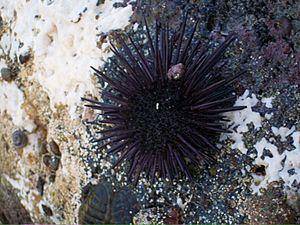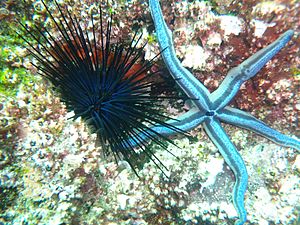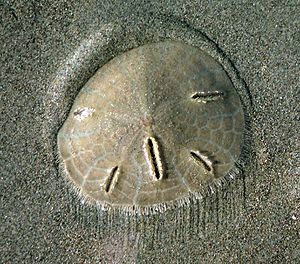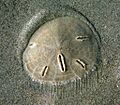Sea urchins of the Gulf of California facts for kids
The sea urchins of the Gulf of California live in the waters between the Baja California Peninsula to the west and the state of Sonora, Mexico to the east. The northern part of their home is near the Colorado River Delta, and the southern part opens up to the Pacific Ocean.
The Gulf of California is famous for having many different kinds of animals and plants, including some that are found nowhere else in the world. Sea urchins are one type of marine animal that makes this region their home. They belong to a group called echinoderms, which also includes starfish. One special sea urchin, called Mellita granti, lives only in the Gulf of California.
Contents
Sea Urchins in the Gulf of California
About 23 different kinds of sea urchins, 3 kinds of heart urchins, and 9 kinds of sand dollars live in the Gulf of California. Scientists divide the Gulf into three main areas to study where these creatures live: the Northern Gulf, Central Gulf, and Southern Gulf.
There are also two other important areas for sea urchins and other marine animals. These are the Southwest Baja California Sur Region and the Colorado River Delta Biosphere Reserve.
Where Sea Urchins Live
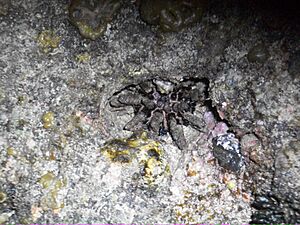
Scientists use these regions to understand how sea urchins are spread out:
- Northern Gulf (GNC): This area goes from the Colorado River Delta south to parts of Baja California and Sonora. It includes islands like Tiburón Island and Isla Ángel de la Guarda.
- Central Gulf (GCC): This part starts where the Northern Gulf ends and stretches down to Sonora and Baja California Sur.
- Southern Gulf (GCS): This region goes from the end of the Central Gulf all the way to Cabo San Lucas on the Baja California Peninsula.
- Southwest Baja California Sur Region (SBC): This area is along the western coast of Baja California, from Cabo Talso to the Bahia Magdelena lagoon.
Special Protected Area
- Upper Gulf of California and Colorado River Delta Biosphere Reserve (RB): This is a protected area at the very top of the Gulf of California. It helps protect the unique animals and plants that live there.
How Scientists Track Sea Urchins
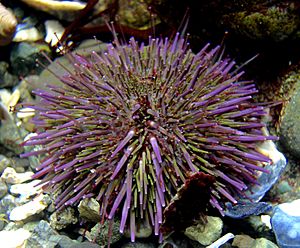
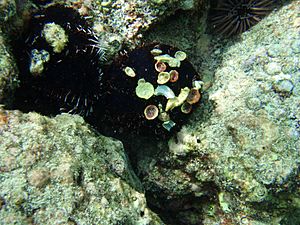
Marine biologists use special short codes, called World Distribution Acronyms, to show where different sea creatures live around the world. This helps them quickly understand the habitat of each species.
For example, PET stands for Tropical Eastern Pacific, which includes the entire Gulf of California. ENGC means a species is found only in the Gulf of California, like Mellita grantii.
Scientists have found many different kinds of sea urchins, heart urchins, and sand dollars in the Northern Gulf of California. They record where each species lives, its depth range in meters, and its global distribution. This information helps us learn more about these amazing creatures.
Sea Urchin Facts from the Northern Gulf
Here are some interesting facts about the sea urchins in the Northern Gulf of California:
- All 35 known species of sea urchins (100%) in the Gulf of California can be found in the Northern Gulf.
- Three species (about 8.5%) live in the Northern and Central Gulfs, and outside the Gulf, but not in the Southern Gulf.
- Most species, 32 of them (about 91%), are found throughout the entire Gulf (Northern, Central, and Southern parts).
- Fifteen species (about 43%) also live in the Southwest Baja California Sur Region, as well as the Northern Gulf.
- Only one species (about 3%), Mellita grantii, is found only in the Gulf of California and nowhere else in the world.
Recent studies have also added more species to the list of sea urchins found in the Gulf, including Lytechinus anamesus, Toxopneustes roseus, Cassidulus pacificus, Mellita kanakoffi, Encope wetmorei, Brissus latecarinatus, Metalia spatagus, Brisaster townsendi, and Moira clotho.
Images for kids


